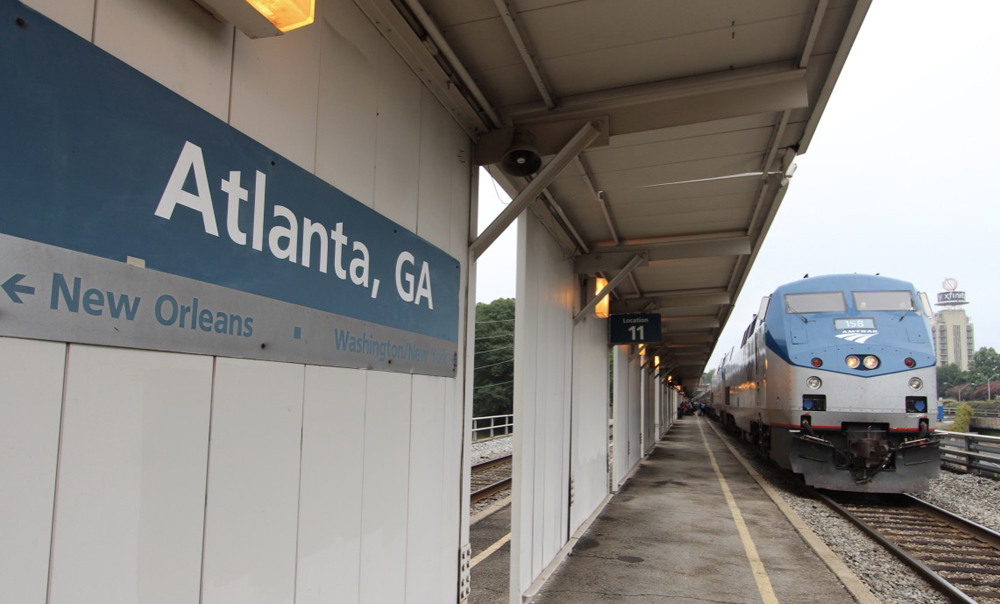
ATLANTA — As of this week with its return to daily departures from New York and New Orleans, the schedule for Amtrak’s Crescent has been lengthened. This is “to improve customer satisfaction and on-time reliability,” according to a service change advistory.
But the adjustments, especially for the northbound train, threaten historically strong patronage on the Atlanta-Northeast Corridor market. New city-pair opportunities could be created with the new departure times, but only if properly promoted.
One reason the Crescent needs attention: it chalked up miserable punctuality in the fiscal year ending Sept. 30, 2020. According to Amtrak’s General and Legislative Annual Report, the New York-New Orleans train only arrived at stations within 15 minutes of schedule between 46% and 48% of the time. The differing figures reflect whether the measurement was made at its final destination, at every station, or weighted by how all passenger arrived at their respective stations.
The last metric, “customer on-time performance,” is the standard established last year by Federal Railroad Administration rulemaking [see “Analysis: FRA seeks Amtrak, host railroad scheduling cooperation,” Trains News Wire, Nov 20, 2020].
For a train to deliver 80% of its passengers “on time,” the rulemaking reasons, Amtrak and the host railroad must develop a schedule reflecting current operating realities. Norfolk Southern, which hosts the train for 1,152 miles between Washington, D.C., and New Orleans, has worked with Amtrak on a schedule that purports to do so. The effort is likely to be the first of many to conform to the FRA rule, since most long-distance schedules haven’t changed in years.
A timetable comparing the Crescent’s original schedule and the one that debuted this week is shown below. Amtrak has yet to publish a downloadable version of the new schedule; this one was created by Trains.com by asking Amtrak’s website for “train status” at the stations shown.
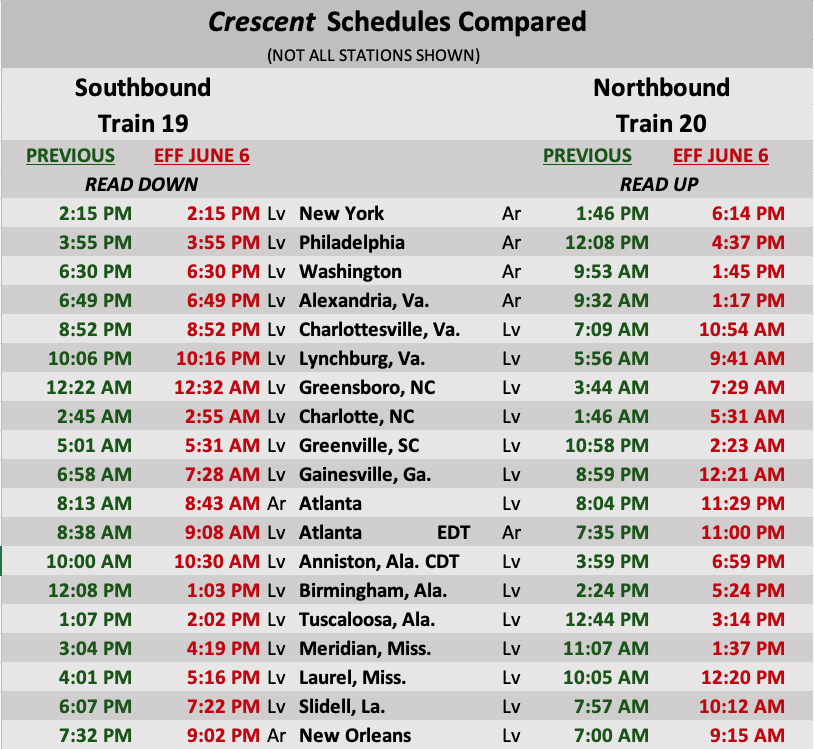 How the schedule has changed
How the schedule has changed
— A half-hour of recovery time, or padding, has been added southbound train No. 19 between Lynchburg, Va., and Atlanta; another hour is added between various stations all the way to New Orleans. The segment between Atlanta and the Crescent City has seen the biggest freight interference delays.
— With the later arrival and the need to give operating and onboard service crews enough rest, northbound train No. 20 now doesn’t leave until 9:15 a.m. The later departure might help attract passengers who thought the previous 7 a.m. time was too early.
— One hour, 10 minutes of recovery time is incorporated into the northbound schedule south of Atlanta. The net result of both the later departure and additional padding is that the train now won’t leave the Georgia capital until 11:30 p.m.
— Instead of a mid-morning arrival into Washington, D.C., and an early afternoon New York City arrival, the northbound train now arrives significantly later.
Anyone who has stayed up or awakened overnight on the Crescent knows that it has always done a surprisingly good business at Charlotte, N.C. With the northbound departure moved to almost 6 a.m., it now becomes an early morning player over part of North Carolina’s Piedmont corridor (as far as Greensboro) and could lure more riders at more attractive times at cities it previously served in the wee hours.
Historic strengths
From the 1970s — when Southern Railway President W. Graham Claytor Jr. withheld his passenger trains from Amtrak during its first decade — through 2013, the Crescent was a model of on-time reliability. It didn’t hurt that Claytor, who became Amtrak’s president in 1982, took a special interest.
As with most long-distance trains, the Crescent developed strong, overlapping markets. Northeast Corridor-Atlanta overnight schedules in both directions delivered passengers the next morning, with time for dinner and breakfast onboard, and still allowed a full day’s activity.
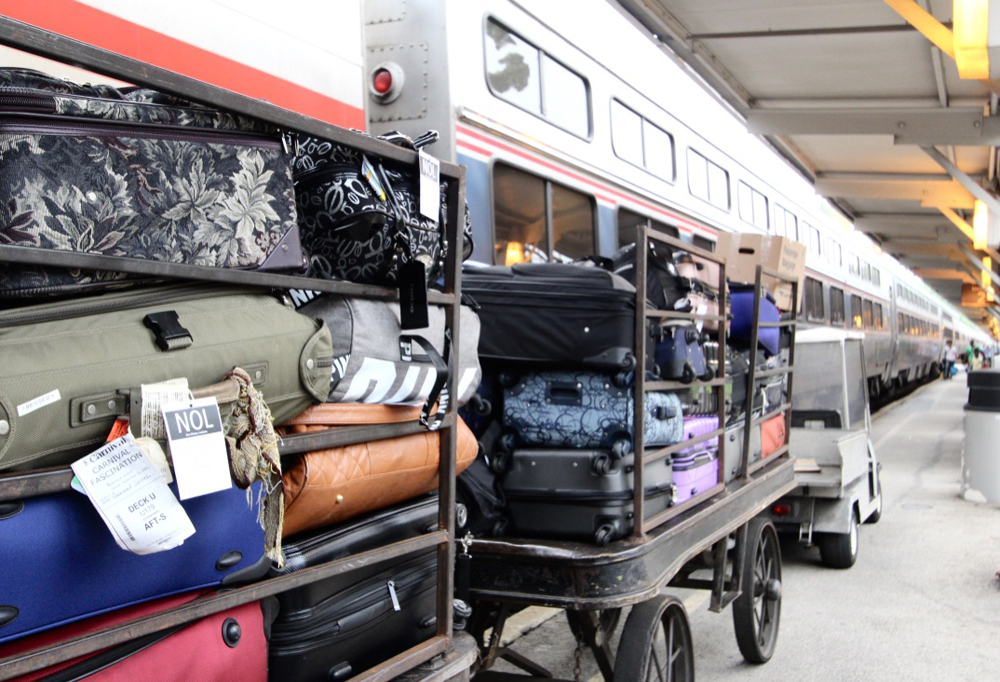
Business was so heavy that some coaches and sleepers were switched out southbound and added northbound at Atlanta to accommodate demand. When Amtrak managers tried to institute the practice in 2012 to improve the train’s revenue and efficiency following a directive from Congress, Norfolk Southern refused to allow en route switching in the increasingly congested Atlanta terminal.
The Crescent’s evening/morning schedule to and from Virginia also had been consistently popular long before the state sponsored a Northeast Regional train to Lynchburg and later Roanoke. The train also did a significant daytime business between Atlanta; Birmingham, Ala.; Meridian, Miss., and New Orleans, along with other intermediate stops.
The new schedule eliminates many of those advantages, particularly northbound, where the longer travel time and later departure puts the train into Atlanta and Northeastern cities at unattractive times.
Some loss in patronage could be counteracted by promoting the new schedule along the route. Yet current Amtrak management has declined to spend promotional money on individual long-distance trains except Auto Train, and even rejects the notion printed schedules are useful in letting prospective customers know when trains leave or what stations they serve.
How are the trains doing on the new schedules?
A Trains.com analysis of the first three days of the new timings shows there were still significant delays that weren’t always counteracted by the lengthened schedules:
— Southbound No. 19 required over an hour leaving Washington on June 6 to swap the electric locomotive for diesel power, but the train made up the delay by Charlotte. After losing an hour again south of Meridian into Slidell, La., it was 32 minutes late into New Orleans.
— Tuesday, the southbound Crescent had early arrivals into Greenville, S.C., Atlanta, and Birmingham, Ala., totaling more than an hour. It could have used the time later, because it was more than 1 hour, 45 minutes late into Slidell, La., and arrived in New Orleans at 10:08 p.m.
— The first two days of northbound train No. 20 generally operated on time with early or on-time arrivals, but the northbound train on Tuesday reduced an hour and a half delay at Tuscaloosa, Ala., to 50 minutes at Anniston, Ala., and 30 minutes arriving Atlanta. Still, what used to be an 8 p.m. departure slipped to nearly midnight.
With the additional leeway given dispatchers to mesh Norfolk Southern’s version of Precision Scheduled Railroading with the newly-minted Crescent schedules, there should be an extra effort to run the passenger train on time, or at least minimize serious delays. Though the lengthened schedule has masked some of the problems, that hasn’t initially been the case.







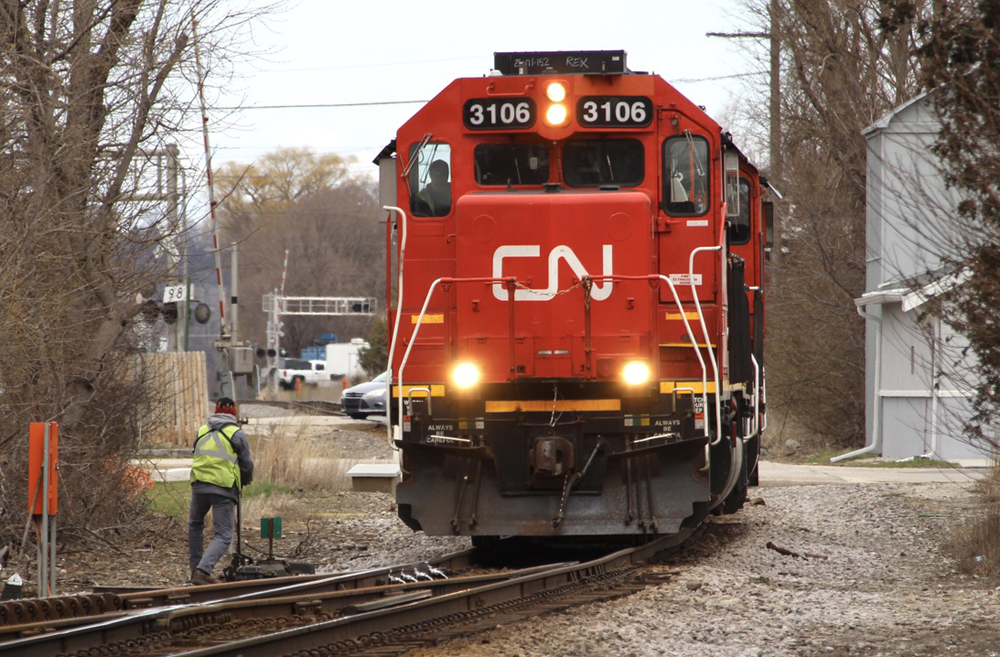
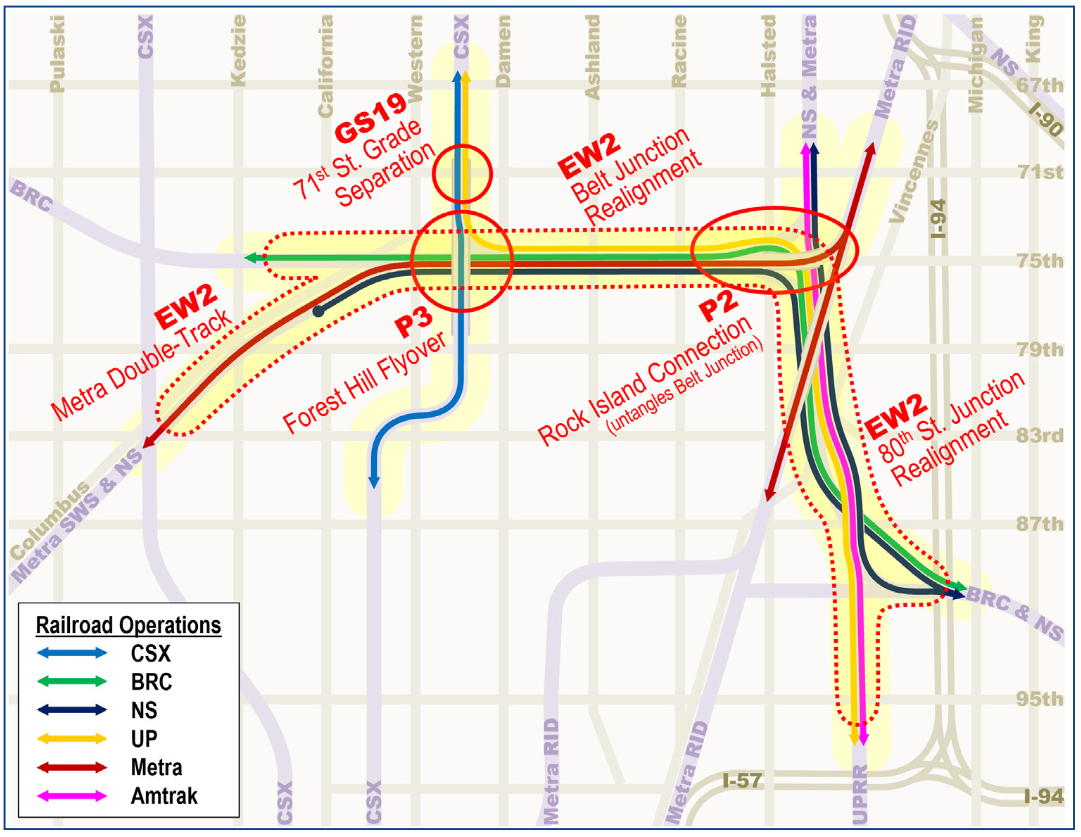
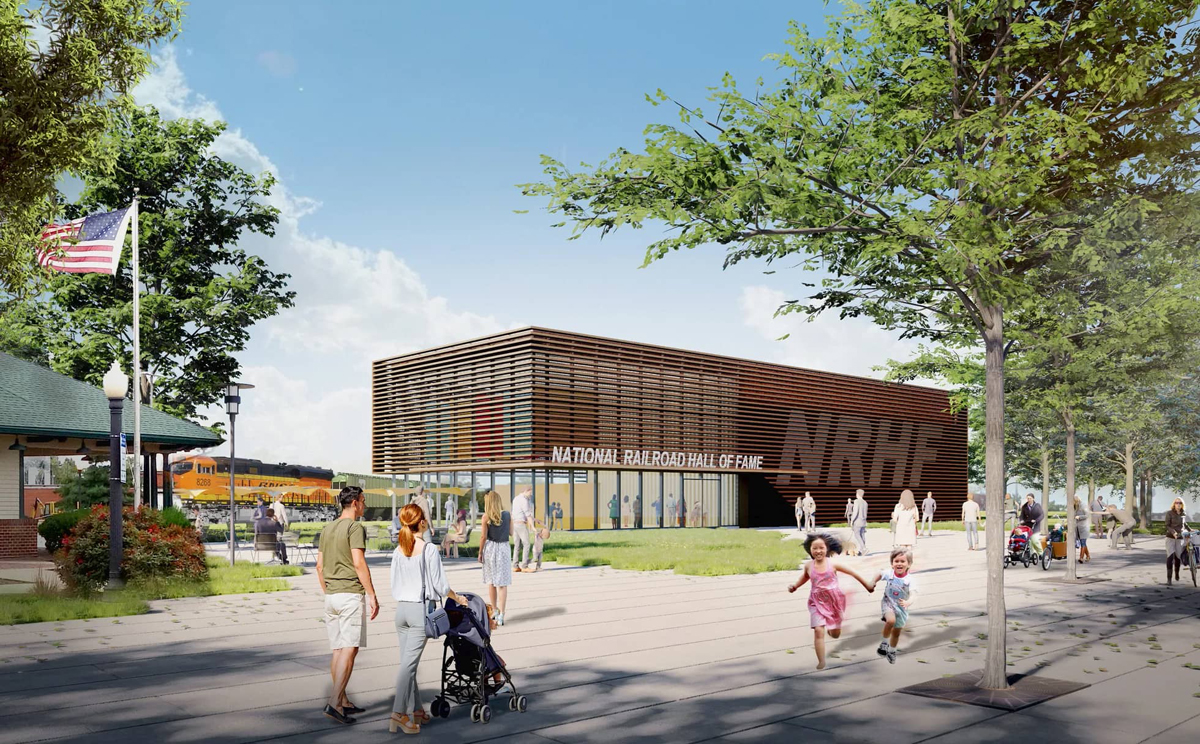




I don’t understand the urge to take the long distance trains. Why spend almost 30 hours (when on time) travelling between New York and New Orleans by train when you can get there in 3 1/2 hours or so by flying?
Here’s a possible second train from ATL to NYP. offset from new Crescent schedule: 4 hours later southbound, 7 hours earlier northbound:
Read Down Southerner Read Up
17 18
6:15p New York 11:14a
7:55p Philadelphia 7:37a
10:30p Washington 6:45a
12:52a Charlottesville 3:54a
4:22a Greensboro 12:39a
6:55a Charlotte 10:31p
12:43p Atlanta 4:29p
I have ridden the Southern Crescent several times for business trips out of Philadelphia,Pa.
I found the old schedule useful especially to Atlanta, Ga. with this new schedule especially northbound is not as useful. With this schedule and worse dinning car service I am sure Amtrak will loose more passengers like me who prefer to travel by train. But with the higher sleeping car fares and reduced food service and a poor schedule it is a reminder of the old days when the private railroads wanted to get trains discontinued. Amtrak needs new managers who understand what the passenger wants and knows how to negotiate a reasonably good schedule with the freight host railroads.
About a decade ago, I was commuting between Birmingham, AL and my home in Rochester, NY on business via the Crescent and on the return trip, the Lake Shore Limited. I can no longer make the connection with the LSL and so I would have to go back to flying for such a trip. Even after I retired, I had reason to travel from New Orleans to Rochester on the same routing on several occasions, most recently 2017, and can no longer do that. This needs to be fixed and in fact the schedules need to be speeded up even more. If a passenger train sees any kind of restricting signal due to other traffic, the railroad should face a significant fine and the management and board of directors should be required to make a personal apology to each and every passenger. Just my two cents. Priority dispatching for passenger trains is a must!!!
This is all part of the master plan from 1971, to make these trains so slow and run at inconvenient times, the passengers will go away. The main purpose of the creation of Amtrak was to slowly kill the passenger train in the U.S. they have done a incredible job so far. Don’t expect to see Amtrak with long distance trains by 2030.
Additional double track is not out of the question. All new bridges built on the former Southern main…for example the one in Clemson SC…are designed for multiple tracks. The US may have single track freight mainlines but a single class 1 carries a lot more tonnage than all of the United Kingdom combined. Double track is not needed unless you are running multiple passenger trains. When regional trains are added the states have to double track…like NC has done btw Charlotte and Greensborough. The new scheduling is absurd though. Not sure why the Crescent can’t just keep close to being on time as it did in the 90’s with arguably more but shorter freights in between.
As usual, Johnston superbly points out the foibles of “The Crescent” under Amtrak tutelage.
However, this is sadly not a route specific issue, but extends to the other long distance routes running on CSX track. Look at the fiasco of the “Lake Shore Limited” schedule, particularly running eastbound.
The pathetic schedule of the “Lake Shore,” plus the eastbound “Capitol Limited” and the “City of New Orleans” over the CN devastate any relevancy for these trains, as well as distort any viable asset utilization given the number of consists required. Apparently, Amtrak schedules the eastern/southern long distance trains for its own benefit, rather than the convenience of passengers; to increase its market.
This new northbound schedule is beyond absurd. The northbound Crescent should depart Atlanta no later than 9:00pm. It is now useless to me personally as an overnight option between upstate South Carolina and Washington. On the other hand, I may book a trip from Greensboro, NC north soon. The daylight ride on the old Southern between Greensboro and Lynchburg is something I’ve not seen in years.
Mr. Shoemaker: Your last thought is exactly what’s needed and nothing less. Charles: To your last thought, attributed to Paul Reistrup, I would be happy with two on complimentary schedules as a start. Would certainly be better than what we’ve been treated to for 50 years. But two should be only a start. Three would give every city/town two daily trains at civilized hours and that’s the best,
I want full Amtrak routes.
I want all the Amtrak routes.
The problem in Atlanta is the station itself. It was built as a suburban stop and not designed for what it is being used for today. It is located at a choke point on NS and ties up both mains while working the station. It would be time consuming to detach cars at Atlanta. A bit easier to add cars as the switch to the former steel mill lead is facing point going south. South of Atlanta it is a slow mostly single track line. Me thinks NS should double track at least to Meridian but probably never will. Unless they can convince government to pony up the cash using passenger as the reason for someone else to pay for it.
JAMES – The way to go isn’t necessarily to switch cars at Atlanta (adding capacity to the Crescent) but to run a second train north of Atlanta. When Graham Claytor’s SR stayed out of Amtrak it ran four trains, three daily and one tri-weekly. Referring to Kalmbach’s “Journey to Amtrak” book published 1972, these were Washington to New Orleans, Washington to Atlanta, Washington to Lynchburg, and tri-weekly Salisbury to Asheville. Of these four, one is left.
As Paul Reistrup said back in the day, If you don’t run at least three trains you’re wasting your time.
Mr. Pins, it’s Richard Anderson’s legacy. He was an airline guy and he brought airline people into Amtrak and he and Stephen Gardner ran off the veteran railroad officers. So the new “team” either know nothing or care nothing about what makes intercity passenger rail a different animal than airlines. Hence, the discarding of everything possible that makes train travel unique. And train schedules are one of the casualties of this ugly war. Regarding the reworked schedules of No’s. 19&20, the problem is no one wants to belly up to the bar and spend the $$$ to add, actually restore in many instances, the track capacity and operational flexibility that once existed. It pains me to cut Flynn/Gardner any slack but Amtrak, if it wants OTP, must play the
hand it’s given. Hence these new schedules that do not play up to the potential strengths in its service area. I agree the whole thing stinks. State DOTs want to and do widen their interstates and arterials with seemingly limitless amounts of $$$ at their disposal. All in the name of relieving traffic congestion. To them it’s the most natural thing. And they know it will not ever relieve the congestion but they play the endless charade. But “widen” a railroad to relieve congestion? They and the politicians will tell you the railroads should pay for it if it’s so important. Unless that mindset ends, the only way out of this is to stop running public passenger trains on freight railroads.
To change the direction of the discussion for a moment, could someone who is smarter than I am please explain to me the elusive (to me) wisdom of the report that “…current Amtrak management … even rejects the notion that printed schedules are useful in letting prospective customers know when trains leave or what stations they serve.” Say what?
Service both freight and passenger service is just awful and will nor get any better in the immediate future. Amtrak has joined a charade if providing service. What value is Amtrak if it denigrate is schedule. Then you can enjoy their bare bones food service.
The ultimate solution, and one which investors would not like…is the complete double tracking of the NS mainline between New Orleans, LA and at the very least Atlanta, GA. My theory is that even if you don’t have the volume of traffic to support that kind of expenditure now, once you have the infrastructure in place then you can market(of course, that means having a marketing department in the first place) to attract the business to support the investment. The railroads don’t even need to hire marketing people, let the logistics companies do your marketing for you.
GERALD – Single-track main lines are found in (1) United States (2) Canada (3) The Fourth World.
Passenger trains run tri-weekly in (1) United States (2) Canada (3) The Fourth World.
The Crescent has not ran on time since Amtrak took it over due to slow turn around at terminals and locomotive and car change outs
Not true. I grew up next to the Southern/NS mainline in central Virginia. Well after Amtrak took over, it was routine to hear the Crescent go by on time in both directions. This awful on time issue is less about Amtrak and mostly about the fall of NS’s ability to run a railroad. If you can’t run a train on time with so called “PSR”, you should find another career.
If you are in that BIG a hurry why would you even consider taking the train? At one time I’m sure there were more direct corridors between a more diverse number of cities but when the Govt bankrupted & nearly euthanized the railroad industry in favor of the kickbacks it would receive from using taxpayer money to establish the Hwy & Aviation industry thus benefiting the oil, real estate, auto industry etc. We’re lucky to have the skeletal rail network we do have both freight & passenger but even that is on shaky ground once the PSR savings run out & the next merger mania begins the railroad themselves may finish what the Govt nearly accomplished.
Amtrak does not seem to understand the market for overnight train service. Washington to Atlanta should be a massive, overnight market opportunity. Yet the northbound schedule is absurd. An earlier departure from New Orleans would help. That is a hardship as well, but the Atlanta to Washington market is huge and worth it. Why can’t Amtrak understand the nature of the market and respond to it?
Sadly, Charles is right. And it will probably be considerably cheaper compared to Amtrak’s sleeping car fares. But Mr. Lester, can we agree that flying Atlanta-WAS is exactly what Flynn and Gardner would rather you do? And regarding the other midpoint to midpoint markets Mr. Johnson cites, can we agree Flynn and Gardner would rather everyone drove or took the bus? That way…
Fly Delta or Southwest, you’ll get there much sooner and on time.
Look at Southwest Airlines’ hub at BWI Baltimore/ Washington Thurgood Marshall. From BWI, direct nonstop flights go not just to the obvious LGA New York or BOS Boston, but to places like Manchester (New Hampshire), Portland (Maine), Long Island, Providence ….. in other words, Southwest Airlines at BWI accomplishes what Amtrak NEC is supposed to do but doesn’t: – distribute passengers to places in the Northeast they’re headed.
We won’t even begin to talk about a comparison between air and rail outside of the Northeast. Oh, I will begin. How’s Amtrak doing getting you from Baltimore to Austin? Or Baltimore to Nashville? Or Las Vegas?
The new 11:29 p.m. northbound departure from Atlanta is terrible. I suspect the dining car will be closed at this time, and one of the pleasures of riding the Crescent on the old schedule was enjoying dinner while heading north out of Atlanta. In the summertime, the sun did not go down until 9:30 p.m., so there was a good 1.5 hours for daylight riding and dinner before bed.
Also, getting to Washington at 1:45 p.m. nearly kills the day. Compared to the old arrival 9:53 a.m., getting to D.C. around 2:00 p.m. leaves only enough time for you to stow your bags in a locker and do one or two things or go to your hotel and check in before it’s dinnertime.
The former schedule, I believe, goes all the way back to the 1970s when Southern ran the Southern Crescent.
Actually, the former schedule does not go back to the 1970s. Even as late as 1979 (when AMTRAK ran the Crescent), it departed Charlottesville at 5:55AM and arrived in DC at 8:30 AM.